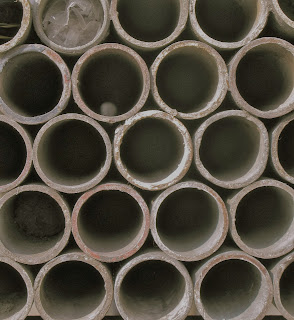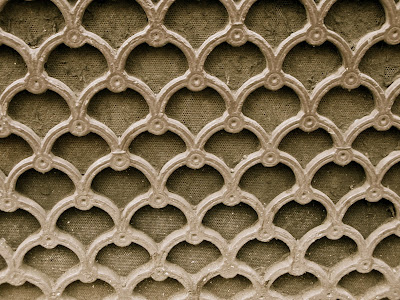Mapping the City - Photographic research
We began to capture interesting compositions and shapes within the city. I found myself drawn to circular shapes and brick work.
I wanted to research why I may be drawn to circular shapes and I found that the most common meanings of a circle are unity, wholeness, and infinity, as the shape is without a beginning or an end.
We were given chance cards to help us develop the photographs that we had taken. The cards really helped me begin to explore different ways in experimenting with not only the drawing itself, but the surface that I was drawing on.

|
| This is scaffolding piled up outside of a building site. Really like the repetitiveness of it, and also that the shadow itself makes its own repeat pattern. |

|
This pattern is the vents on the side of a cathedral. Again it's a repeat pattern. This indicates to me that I may be suited for the print textile world. I'm already thinking of how I could develop these images. I think using a lino cut of a segmant of this pattern would create a interesting motif.
|
Development
I really enjoying developing my imagery with simple line drawings.
I experimented with line drawing, by looking away from my surface, blindfolding myself and using my left hand.
I also used a collage effect. Trying to make similar marks with different media.

|
| Firstly I used masking tape to create a surface for my drawing. I used found circular objects dipped in indian ink. I also used white ink on black cartridge paper, and then cut this up into circular shapes. I like the idea that these shapes, were an image beforehand. |
 |
I like using simple line drawing, as it's less pressure to create the original image. It's very lose and quick, and it can generate lot's of ideas for further development.
|






































